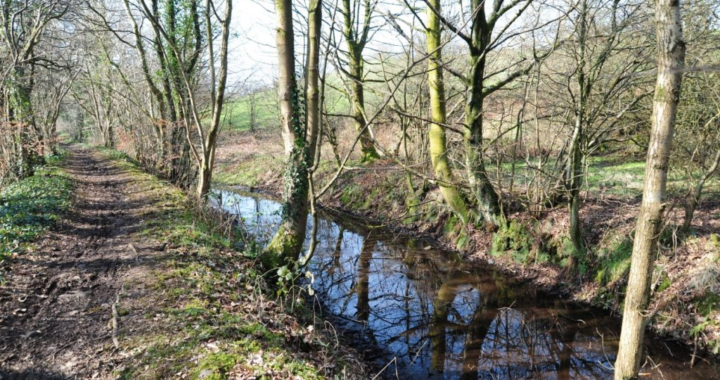In the mid-eighteenth century, long before Kilbarchan was renowned for the weaving of tartan, a number of Kilbarchan entrepreneurial families, the Speirs, Barbours, Hows and Houstons, became prosperous linen merchants. They engaged local weavers, most of whom worked looms in their own homes, and marketed the finished textiles. By the end of the century, these early manufacturers of quality linen, had diversified their interests, and their weavers worked mainly in silk and cotton.
By the1740s Alexander Speirs and his brother Allan had built up a successful manufactury as linen merchants and bleachers. In 1742 Allan Speirs was the first of the village merchants to introduce the fine lawn and cambric, woven in Kilbarchan, to Dublin markets. The partnership also carried out bleaching work for local cloth manufacturers, including Kerr, Pollok & Co. in Paisley.
Alexander married Margaret Barbour, the sister of another Kilbarchan linen merchant, Baillie John Barbour. After the deaths of Alexander Speirs and his brother Allan, Alexander’s sons Allan and Alexander continued to run the family manufactury, and business continued to prosper. This Allan, like his uncle of the same name, attended to the sales and export side of the business. Sadly, he had an unfortunate end, breaking his neck in a fall from a horse in Paisley. He was succeeded by his younger brother, Alexander. It is said that Allan left, a very considerable inheritance, to his younger brother, making Alexander (jun.), the sole owner of this very successful business. At the age of thirty Alexander Speirs was a wealthy young man. In 1775 he bought the lands of Glentyan and Glentyan Corn Mill from James Black of Penneld.
Under this Alexander Speirs, the family textile manufacturing business continued to prosper and by the 1790s his weavers were working mainly in cotton. Alexander was an ambitious man and was keen to improve the quality of his muslin. In 1792, he purchased fine finished quality cotton yarn from Robert Owen (later of New Lanark), the manager of Mr Drinkwater’s cotton spinning factory, Bank Top Mill, in Manchester. Alexander Speirs’s first woven piece of exceptionally fine quality muslin, regarded as ‘the greatest curiosity of British manufacture’, was sent as a present to Queen Charlotte, the wife of George II.
In the1790s Alexander Speirs was a very wealthy man. He built Glentyan House, the prestigious mansion house which stands on the estate today. He was also keen to diversify his interests and invest in the new cotton spinning industry. This appeared to be an astute financial move and would guarantee a supply of cotton yarn for his weavers. In 1792 in partnership with Robert Barr, a Paisley muslin manufacturer, and brothers James and John McIlwham, manufacturers in Anderston, Alexander Speirs invested in the establishment of a large cotton spinning mill at Crosslee. The building of Crosslee Mill was an ambitious project. It was to be the largest cotton mill in Renfrewshire and took three years to build, partly because of the length of the lade. This 2000 metre long lade can still be followed along the north bank of the Gryffe from Bridge of Weir to Crosslee.
 Crosslee Mill Lade
Crosslee Mill Lade
But his fortunes were about to change. His untimely and over-ambitious investment in Crosslee Mill and the vast expense in the rebuilding of Glentyan House resulted in his financial ruin, and he died a poor and broken man. He did not leave a will and there is no known gravestone erected to his memory in the village.
©2022 Helen Calcluth
Further information on the Speirs, Barbours, Hows and Houstons is contained in “Kilbarchan and the Handloom Weavers” (Chapter 3, pp 31-42) available on the website Publications.

